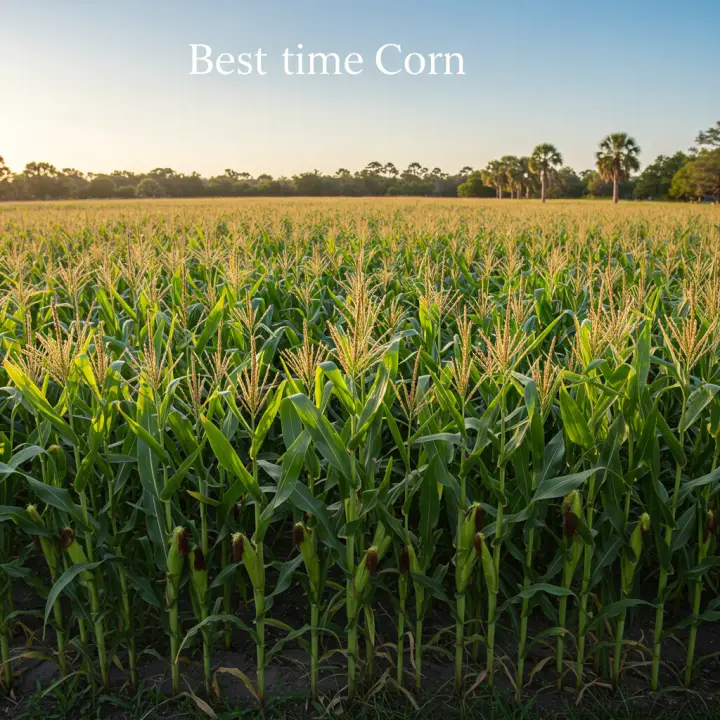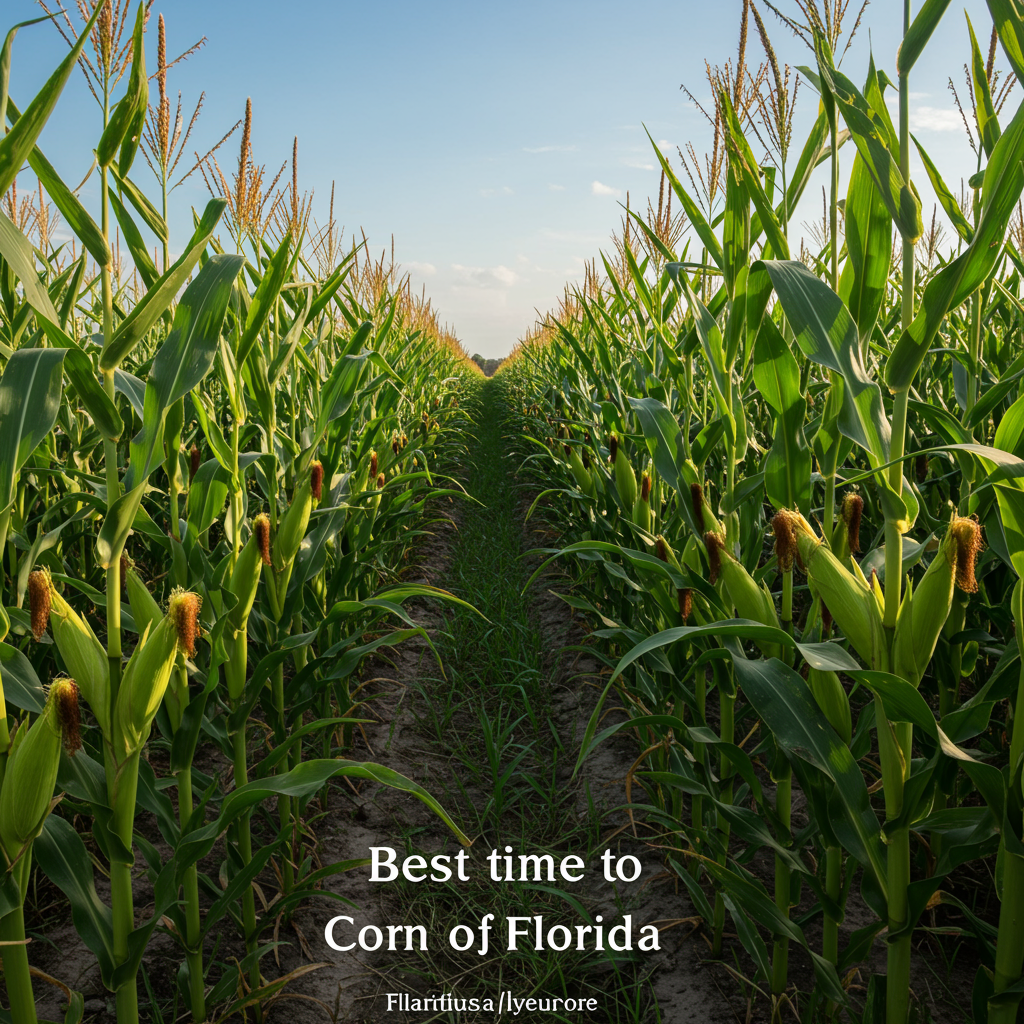Knowing the best time to plant corn in Florida is crucial for a successful harvest. This guide covers everything from understanding Florida’s unique climate to choosing the right variety and managing pests and diseases, ensuring you get the most out of your corn crop.

Introduction: Sweet Corn Success in the Sunshine State
Florida’s warm climate offers a unique opportunity for growing delicious sweet corn, but timing is everything. Planting at the right time is essential for maximizing yields and enjoying a bountiful harvest. This comprehensive guide will walk you through the intricacies of planting corn in Florida, addressing various factors that influence planting dates, variety selection, and overall crop management.
Understanding Florida’s Climate Zones
Florida’s diverse climate plays a significant role in determining the ideal planting window for corn. The state is divided into three primary zones for corn planting:
North Florida: Characterized by cooler winters and milder summers.
Central Florida: Experiencing warm winters and hot, humid summers.
South Florida: Enjoying a subtropical climate with mild winters and hot, humid summers that extend longer.
These variations in temperature and rainfall necessitate different planting strategies for each region.
Best Time to Plant Corn in Different Florida Zones
North Florida: The optimal planting window for North Florida is typically from late February to early April for the spring planting and July to mid-August for the fall planting. This allows the corn to mature before the onset of summer’s intense heat or winter’s first frost.
Central Florida: Central Florida gardeners can plant corn from early February to mid-March for the spring crop and from late August to September for the fall planting.
South Florida: In South Florida, corn can be planted nearly year-round, with the best results obtained from September through February. However, avoiding the hottest summer months (June – August) often leads to better yields.
Choosing the Right Corn Variety
Selecting the right corn variety is essential for success. Some factors to consider include:
Days to Maturity: This is the number of days it takes for the corn to mature from planting to harvest. Choose a variety that aligns with your planting window and expected growing season.
Disease Resistance: Opt for varieties resistant to common corn diseases prevalent in Florida, such as Southern corn leaf blight and corn smut.
Sweetness: Consider the sweetness level you prefer, ranging from standard sweet corn to supersweet varieties. Popular choices include Silver Queen, Ambrosia, and Peaches and Cream.
Soil Preparation and Planting Techniques
Soil Testing: Conduct a soil test to determine its pH level and nutrient content. Corn thrives in well-drained soil with a pH between 6.0 and 6.8. Amend the soil accordingly.
Soil Preparation: Till the soil to a depth of 8-10 inches, removing any weeds or debris. Incorporate organic matter like compost or aged manure to improve soil fertility and drainage.
Planting Depth and Spacing: Plant corn seeds 1 to 2 inches deep and 8 to 12 inches apart within rows spaced 2 to 3 feet apart. Block planting, where seeds are planted in small squares rather than rows, can improve pollination.
Watering and Fertilizing Your Corn Crop
Watering: Corn needs consistent moisture throughout its growing cycle. Water deeply and regularly, especially during dry spells. Aim for about 1 inch of water per week.
Fertilizing: Apply a balanced fertilizer containing nitrogen, phosphorus, and potassium at planting and again when the corn is about knee-high. Side-dressing with nitrogen fertilizer when the corn tassels can further boost yields.
Pest and Disease Management
Corn is susceptible to various pests and diseases in Florida. Here are some common challenges and management strategies:
Corn Earworm: Use insecticides labeled for corn earworm control. Alternatively, consider placing a few drops of mineral oil into the silk of each ear after pollination.
Fall Armyworm: Monitor for fall armyworm damage and apply insecticides if necessary.
Southern Corn Leaf Blight: Choose resistant varieties and practice crop rotation to prevent this fungal disease.
Corn Smut: Remove and destroy infected plants to prevent the spread of this fungal pathogen.
Harvesting Your Corn Crop
Timing: Harvest corn when the silks have turned brown and dried out. Puncture a kernel with your thumbnail; if the liquid is milky, the corn is ready.
Technique: Twist the ear downwards and away from the stalk.
Frequently Asked Questions (FAQs)
Q: Can I grow corn in containers in Florida?
A: Yes, you can grow corn in large containers, but choose dwarf or compact varieties. Ensure adequate drainage and consistent watering.
Q: How do I know when to water my corn plants?
A: Stick your finger about an inch into the soil. If it feels dry, it’s time to water.
Q: What are some companion plants for corn?
A: Beans, squash, and pumpkins are beneficial companion plants for corn.
Q: How can I protect my corn from birds?
A: Cover the corn ears with paper bags or netting as they mature.
Conclusion: Enjoying the Fruits (or Kernels) of Your Labor
Growing corn in Florida can be a rewarding experience. By following the guidelines outlined in this guide – from understanding the specific needs of your region and choosing the right variety to implementing effective pest and disease management strategies – you can ensure a successful harvest and enjoy the sweet taste of fresh, homegrown corn. With proper planning and care, your Florida garden can produce a bountiful corn crop for you to savor. Remember to choose disease-resistant varieties, monitor for pests, and harvest at peak ripeness for the best flavor.

